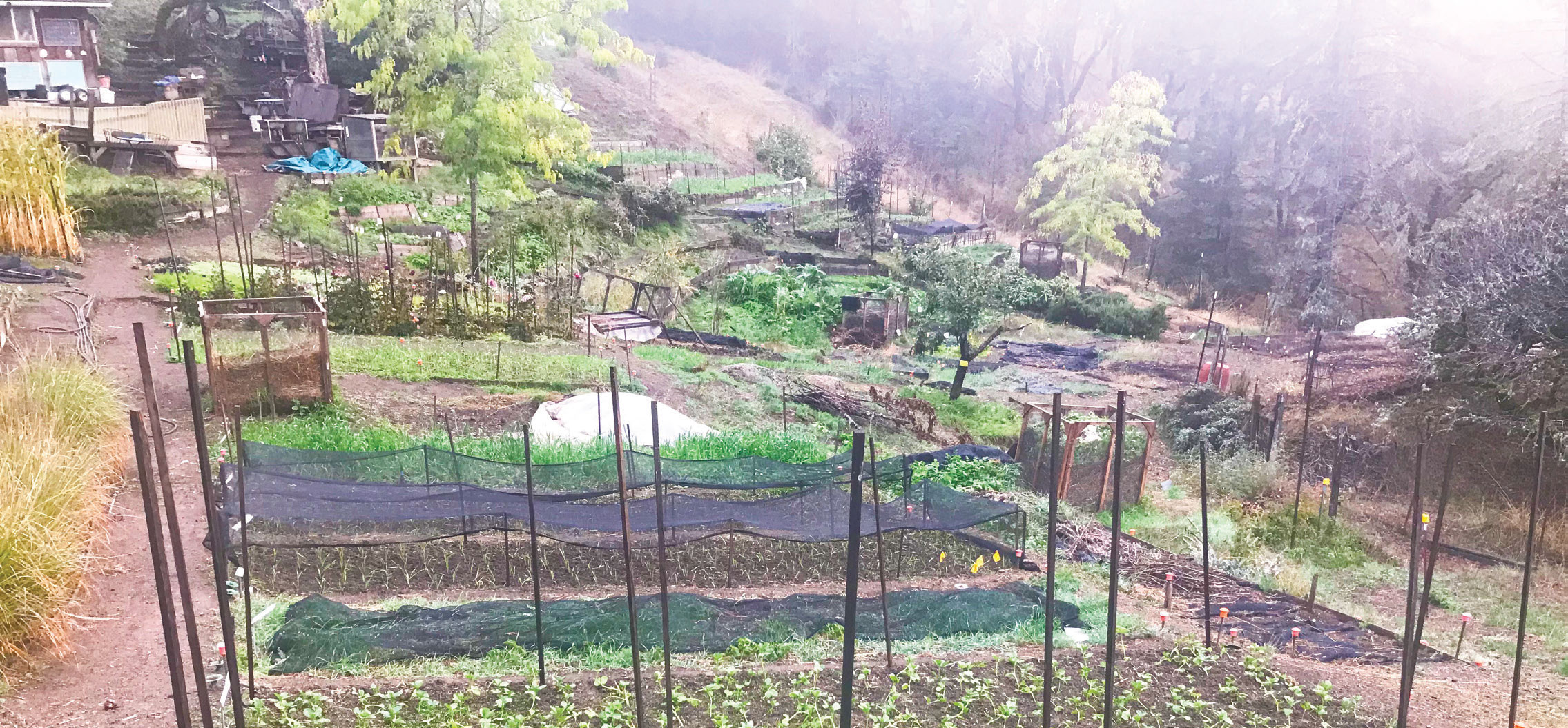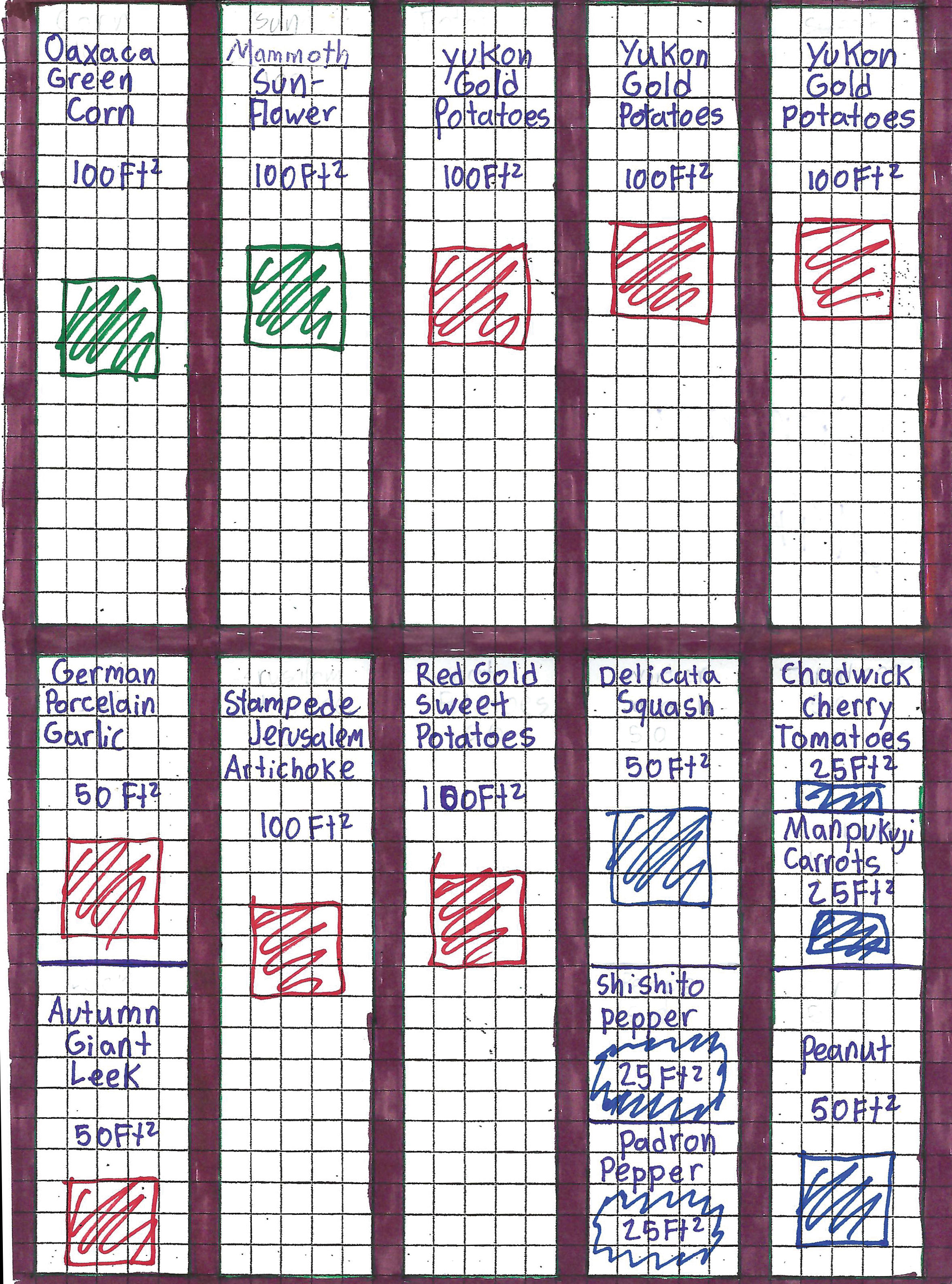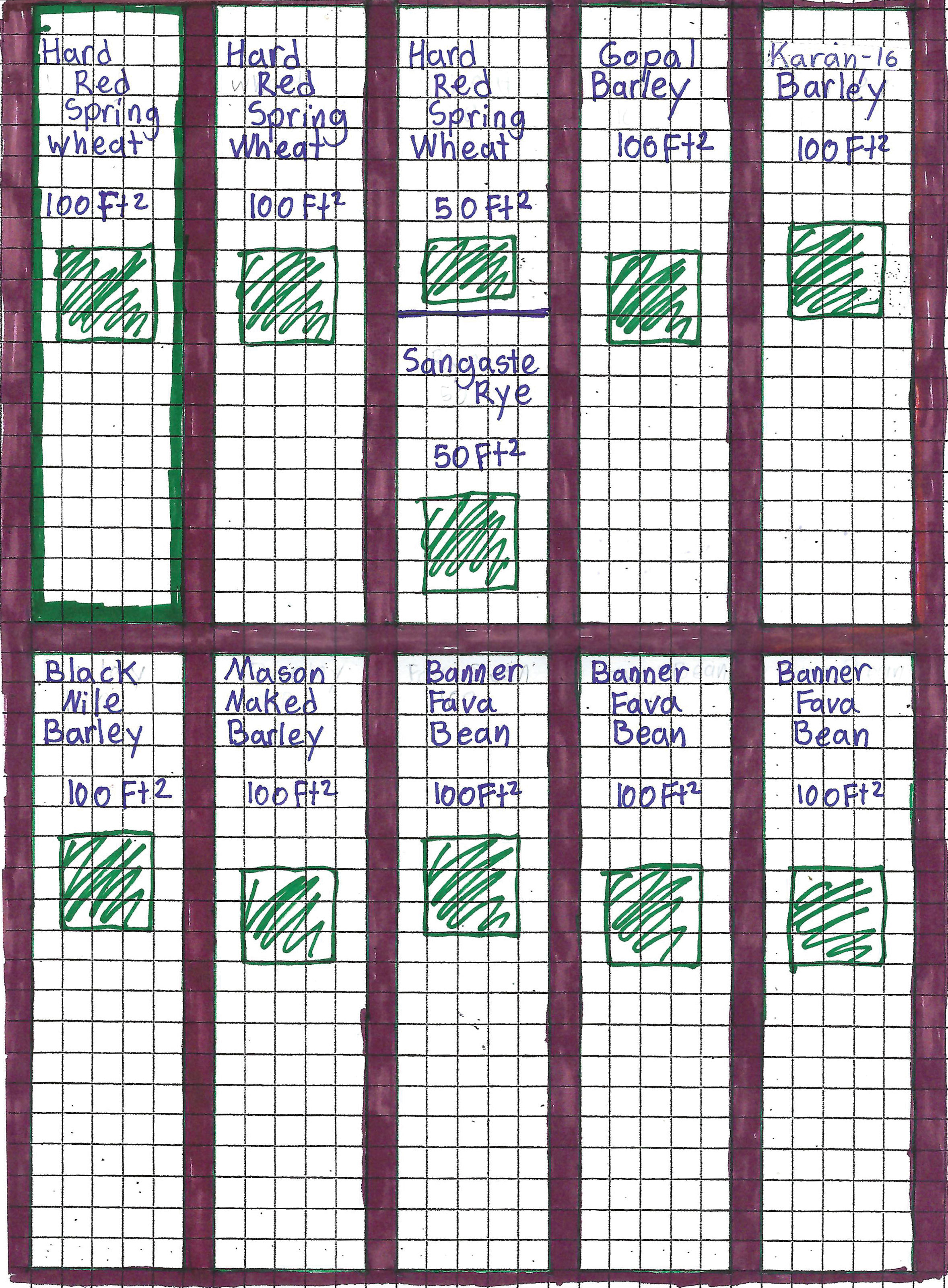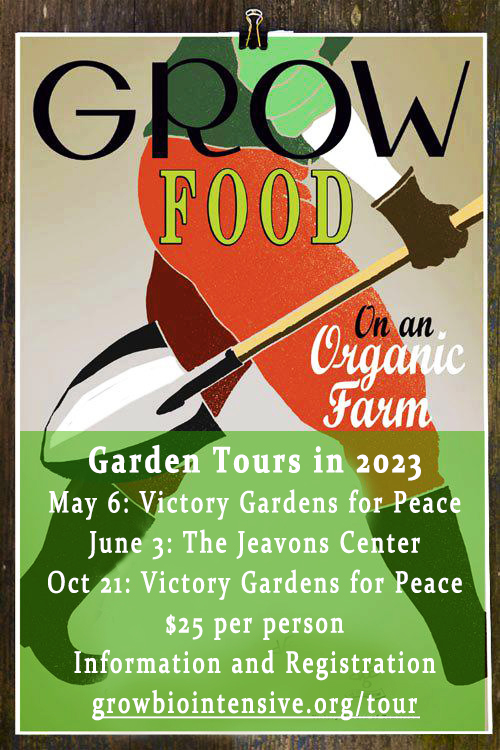The Jeavons Center Mini-Farm Report
by John Jeavons,
Executive Director, Ecology Action

Above: The Common Ground Mini-Farm at The Jeavons Center, in February, before the snow arrived
With snow is thick on the ground at The Jeavons Center, it's a little hard to believe that spring is almost here, but the daffodils are blooming and before this storm, temperatures were close to 80°F, and gardeners and mini-farmers here in the Northern Hemisphere are enjoying the wintery pleasure of choosing the crops they’ll grow in the coming season. At TJC, our Farmer/ Teacher/ Trainer Team (Melvin Castrillo, Suraya David Sadira, and Jessi Mickow) are preparing to plant their Complete Diet 10-Bed Unit micro-farm designs, based on many seasons' experience. They will also be planting four additional 100 sq ft growing beds with extra crops they want to learn from and/or especially enjoy eating more of!


Above: One of the 10-Bed-Unit designs (upper: summer, lower: winter) to be planted at TJC this season.
red square = 60% compost crops green square = 30% calorie crops blue square= 10% income/micronutrient crops
To keep track of everything, the FTT team uses our detailed 52-Week Planning Chart for each growing bed, which is laid out in three horizontal fields across the weeks of the year, to create schedules for Fall, Spring, and Catch-Crop seasons. It’s easy to use: you just look at what needs to be done in a given week, and the schedule has already been set up (optimally for the entire year) the previous August. This type of long-term planning becomes possible when you work with your garden for several years and keep good records so you know what works, what doesn't, and when repetitive tasks need to be done each season. Experienced gardeners who want to use this system can find our 52-week Planning Chart spreadsheet at growbiointensive.org/ePubs under the "featured downloads" tab, but for many beginning gardeners a less exhaustive planning approach may be more suitable. If you are looking for some simple but effective planning tools to get growing, the following resources may prove useful:
Basic Planning and Planting Information
- In The Sustainable Vegetable Garden by John
Jeavons and Carol Cox, Chapter 7: Planning and
Planting Crops (pp 47-71) is especially useful, and
includes simple planning chart templates you can
fill in, a sample GROW BIOINTENSIVE (GB) Growing
Bed Chart, and a Master Chart with planning
information for many popular crops. On pp. 50-
53, the Sample Biointensive Bed Garden Plan for
Willits [available for free here]
is good basis for planning a garden almost anywhere
as a first-time gardener, as the first eleven
crops are the most popular in the U.S. (and popular
in many other countries as well). The reason
there are 11 crops rather than the usual "top
10" is because we include two types of onions for
yields at both ends of the season: fast-growing
green bunching onions to use fresh (or freeze)
and slower-growing bulbing onions for storage.
The Sample Plan shows the square footage of you
need to grow an amount of each variety which, at
reasonable yields, the average person will use of
each crop annually. At beginning-level GB yields
(assuming minimal soil fertility and farming skill)
this 11-crop mini-garden can reach the desired
annual yield goals in as little as 200 sq ft. At intermediate-
level GB yields (with reasonable soil
fertility and farmer skill) the same yields can be
produced in as little as 100 sq ft.
As you become familiar with how your soil and
skill-levels work with this plan, and the yields
your garden can reliably produce with these crops,
you may decide to modify this basic garden plan
to accommodate your preferences, climate, and
culture. For example, in California, where more
tomatoes are eaten compared with the average
US diet, a mini-farmer might want to increase the
area for tomato production. It's fun to try new varieties,
and to hone your garden to produce what
you and your family enjoy most.
- Another a key resource for planning and planting
is The Backyard Homestead, Mini-Farm and
Garden Log Book. Pages 148-150 provide a guide
to determining the length of the growing season
in your are area, plus the temperature ranges involved.
Page 151 notes the hours of direct sunlight
needed for good plant growth. Pages 152-161 show
the dates for starting in flats, direct sowing (although
GB only recommends direct-sowing radishes
and buckwheat), and transplanting seedlings
for many crops, including grains, for both
90-day and 240-day growing season regions.
The key dates can be adjusted according to your
first frost date. Pages 161-189 provide a Planning
Guide to help you create your own plan.
- In this issue of The Garden Companion we have advice and resources from the Bountiful
Gardens archive to help with planning a garden
around challenges that occur in different climates.
Happy Planning and Best Wishes from us all for a
New Wonderful Gardening Year!
Looking ahead, Ecology Action and Victory Gardens for Peace will be offering garden tours in 2023! Come see our work! Information and registration at growbiointensive.org/tour

Come see how we:
Grow Hope
Grow Abundance
Grow Biointensive!
♥
top | Newsletter Home |Table of Contents| Archive

|






